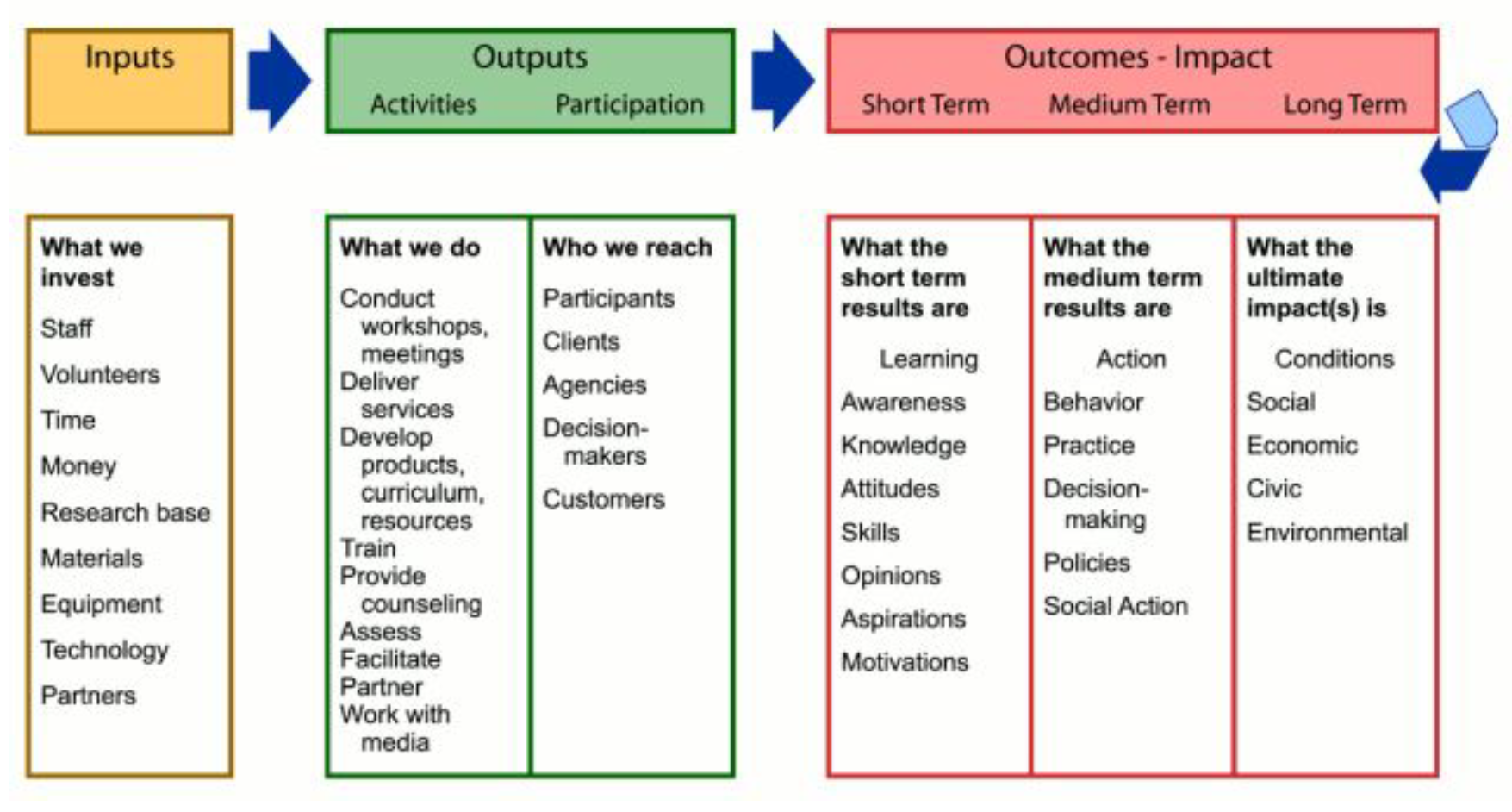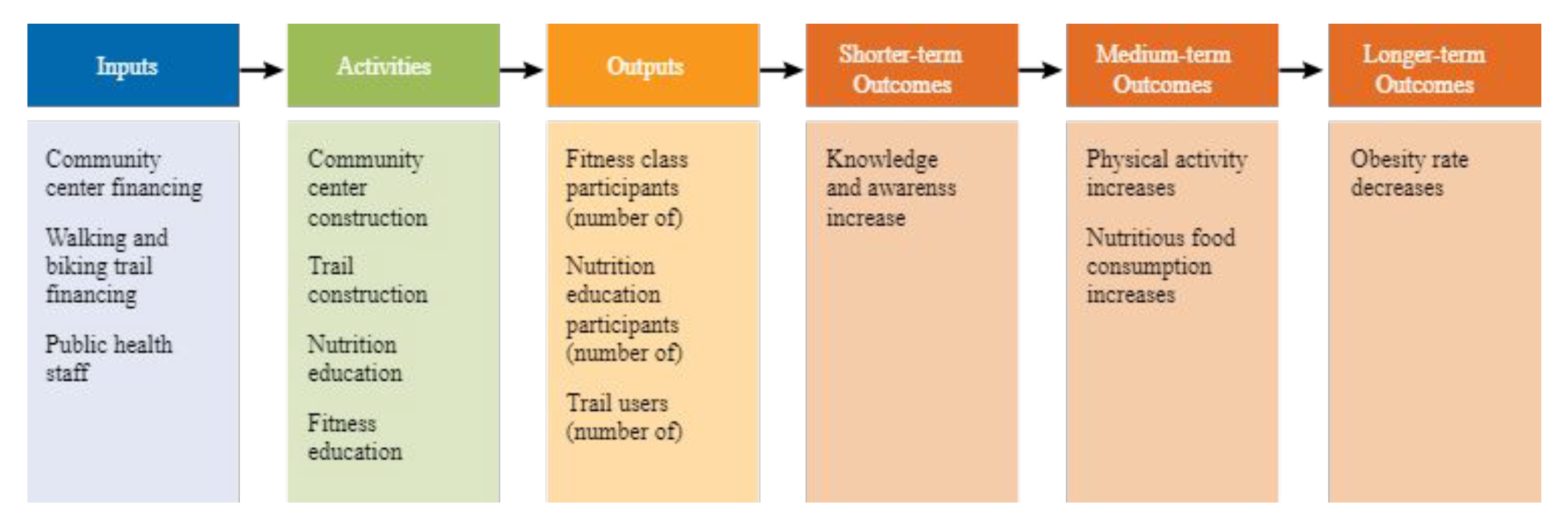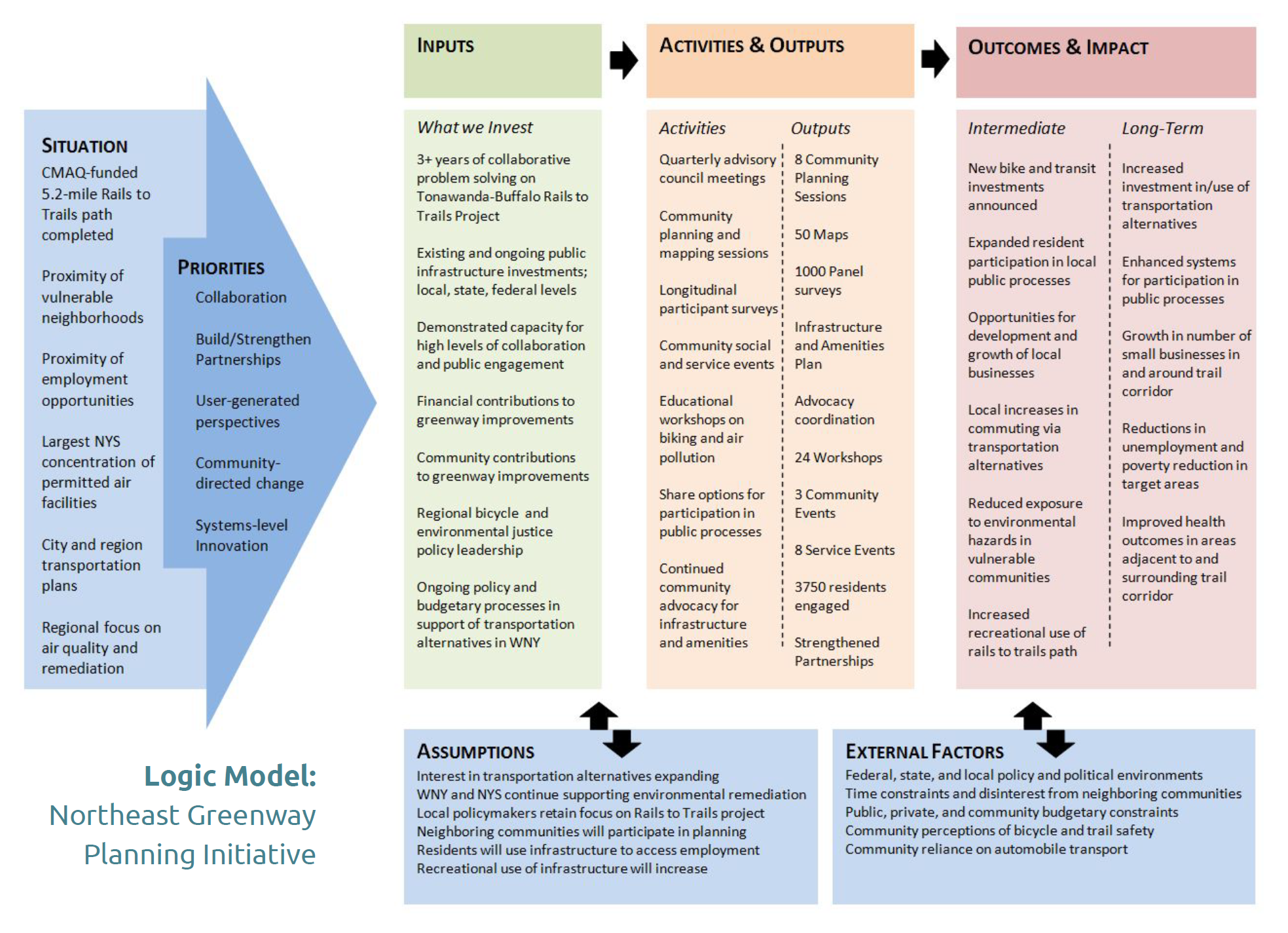Logic Model & Theory of Change
A logic model is a systematic and visual way to present the relationships among:
the resources you have to operate your program,
the activities you plan to implement/are implementing,
the results you hope to achieve (outputs and outcomes),
and the impact of those accomplishments (long-term outcomes)
Logic models help plan, implement, evaluate, and communicate the work of programs and initiatives more effectively. They often list an inventory of the human, financial, and other inputs needed to operate a program, and then describe the sequence of activities that are expected to result in clearly-articulated outputs and outcomes.
A logic model shows how activities are linked to the expected results and provides stakeholders with a road map that they themselves can navigate, regardless of background. By visualizing a program as a framework, people can quickly understand the outcomes and potential impacts of a particular program or service.
Funders, organizations, and staff rely on logic models to quickly comprehend a program’s purpose and goals and understand how specific individuals, agencies, or companies ‘fit’ into projects. Other similar tools include a Theory of Change, LogFrame, Logical Framework, or Program Framework.
When combined with a theory of change, logic models can offer tangible opportunities to learn what works (and why), and may create opportunities for additional investment to support improvements, expansion, or replication.
What is a Theory of Change?
A Theory of Change links outcomes and activities by explaining how and why the desired change is expected to emerge. Theories of Change typically start with a goal (like reducing childhood lead poisoning) and the best practices that can help reach that goal, before describing which programmatic approaches are needed.
Theories of Change and Logic Models complement each other, and both can greatly improve program design and evaluation.
Logic Models are great when you need to:
Show someone something they can understand at a glance
Demonstrate that the basic inputs, outputs and outcomes have been identified
Summarize a complex program and project into basic categories
Theories of Change are best when you need to:
Design a complex initiative and want to have a rigorous plan for success
Evaluate appropriate outcomes against a standard of success
Explain why an initiative worked or did not work, and what went wrong
How-To: Logic Models
Use these videos to learn more about using logic models to structure and plan your work.
Logic Models for Quality Improvement
Logic Models for Public Health
Intro to Theory of Change
Strategies & Tips for Success
Make your logic modeling efforts more effective by keeping these strategies and tips in mind:
Before you start, review best practice research and practitioner experience
Goals and objectives must be both plausible and possible
Prioritize program aspects most critical for tracking and reporting
Define intended program needs, activities, and impact
Involve and engage stakeholders in the design, process, and use
Feedback and improvement helps to generate a consensus view of the program
Feedback is a critical practice to increase program capacity and diversity of perspective
Logic models increase the practitioner’s voice in the domains of planning, design, implementation, analysis, and knowledge generation
Logic model should reflect group process and shared understanding
Collecting feedback iteratively helps to identify common ground and anticipate potential conflicts
Programs and life change over time, logic models should also change
Treat the logic model as a working draft, living document
Practical Activities & Learning
1) Review selected documentation related to the Lead Safe Task Force (link to folder on request)
2) Review the documentation a second time, this time making notes of or underlining key words and phrases
3) Label the underlined words and phrases as inputs, activities, outputs, short-term, or long-term outcomes
4) Create a program logic model using the key words and phrases you identified
5) Logic models should include inputs, activities, outputs, outcomes (short-term), and impact (long-term outcomes); and should be logically-ordered to be read from top to bottom (in terms of priority) and from left to right (inputs to impact)
In the Field
As a neighborhood consultant, you can submit up to 3 logic model worksheets for the programs, processes, and services you’re working on. Notes and outputs should be summarized and shared to enhance our learning.
Logic Model Field Journal Worksheets available on request from aaron[at]akroadvice.com




